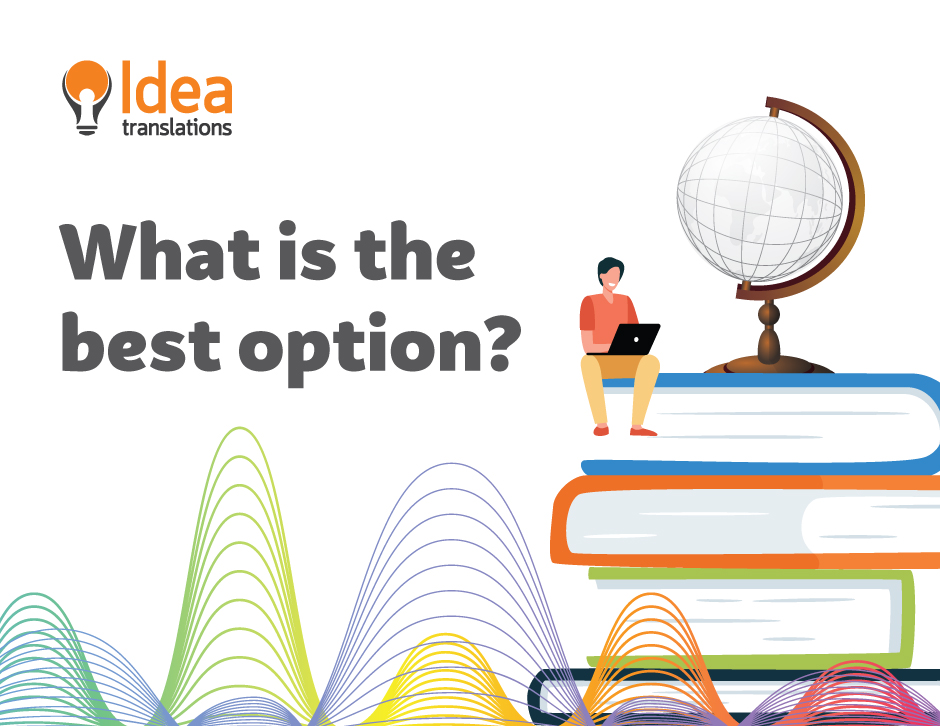
Subtitling vs Dubbing: What is the Best Option for Educational Material?
There are two ways to receive audio and video in a foreign language: subtitles or dubbing. Most people have a preference in this respect, but a TV show or a movie are not comparable to an on-line lesson or course.
What are the features, pros and cons of each translation modality? What is the best option for learning?
Subtitling vs Dubbing
Subtitling means adding a line of written text in the target language translating the phrases said in the source material. It should be read in sync with the audio. Generally, it appears in the lower section of the screen in a color and font that facilitates reading.
Dubbing, on the other hand, substitutes the audio in a language with the audio in the target language. The source material cannot be heard; the voice actors speak in the target language, following the intonation and style of the source material. There is a similar process, known as voice-over, in which the source audio is not completely eliminated; it can be heard at a lower volume in the background.
The basic difference is that subtitling uses a visual cue to translate the content, while dubbing uses audio to the same end.
In Latin America, 2 out of every 3 people prefer to watch their shows with Spanish dubbing.
Source: Netflix/Todo Noticias
Pros and Cons
Subtitling provides better access to the content, which increases the likelihood of understanding the source material. It also allows viewers to experience source tone, non-verbal cues, grammar and syntax. So much so, that it has become a great tool for language learners.
However, some of its detractors suggest that subtitles can be distracting. The need to read reduces the attention available for other elements, such as audio. Moreover, when it comes to learning materials, reading subtitles requires an extra step to understand the source material.
In countries where materials are usually received in English, 58% of the population is able to hold a conversation in English, as compared to 32% in countries where materials are usually dubbed.
When the source material is very complex, it is frequent for students to go over certain parts again, and subtitles may make this task difficult. It is also common for information to appear, twice (on the screen and in the subtitles in the lower part of the screen) which makes it even harder for students to keep up. At a time when many students use their mobile phones to take on-line classes, the size of the subtitles may be too small or illegible and result in high drop-out rates.
Dubbing, on the other hand, allows for a more immersive experience because the screen is free of subtitling text. Some specialists also claim that students find it easier to understand the contents in their native language.
An important drawback is that high quality dubbing is relatively expensive. It requires a larger number of participants —because each original voice is dubbed by a different voice actor— and technical staff to record and synchronize the audio. On the contrary, subtitling only requires a subtitling professional, an editor and technical staff for synchronization.
Subtitling or Dubbing: What is the Best Option?
When it comes to choosing an option, we need to consider the characteristics of each project to make a decision. Some countries, like Spain or Germany, are more used to dubbing and are usually wary of subtitles. If the content is very complex, dubbing is likely to be the best alternative for students.
However, if there is a need to distribute a large amount of content fast, in several languages and with lower costs, subtitling may be the best option, because it is cheaper, faster and simpler to produce. If exposure to the source language is one of the objectives of the course, subtitling is also the best option.
It is always advisable to rely on the experience and counsel of specialized companies that offer these services and can guide you based on your learning objective and culture of the target country, so that it is easier to choose between the two according to the specific features of each material. Both methods are complex and involve both creativity and technical know-how. The ultimate goal? To improve the performance of your content and make it available to a larger audience in the most efficient way possible.



